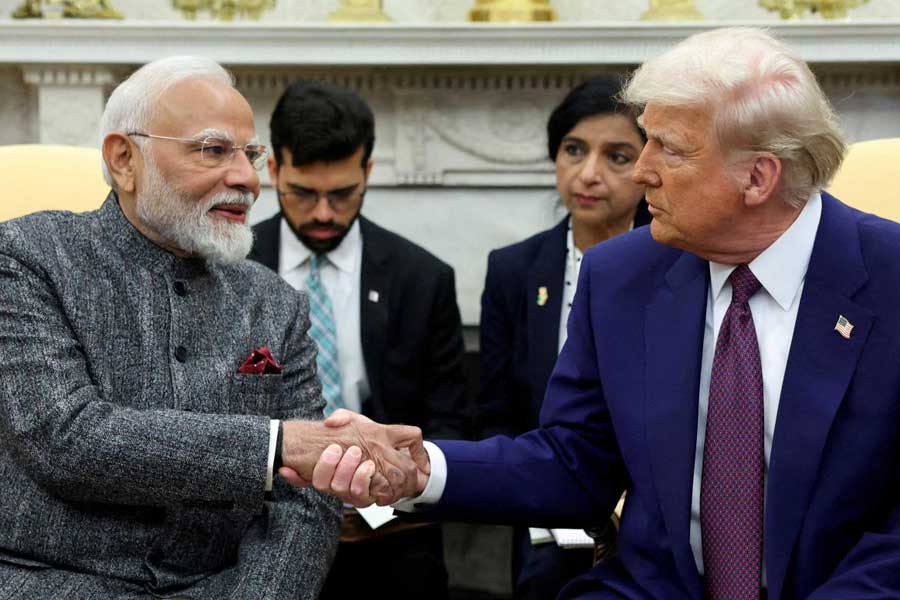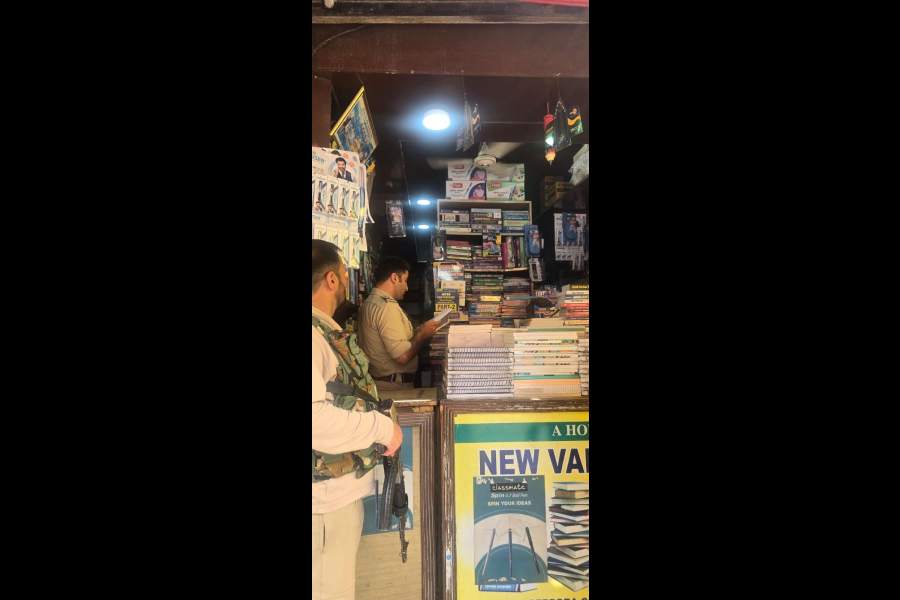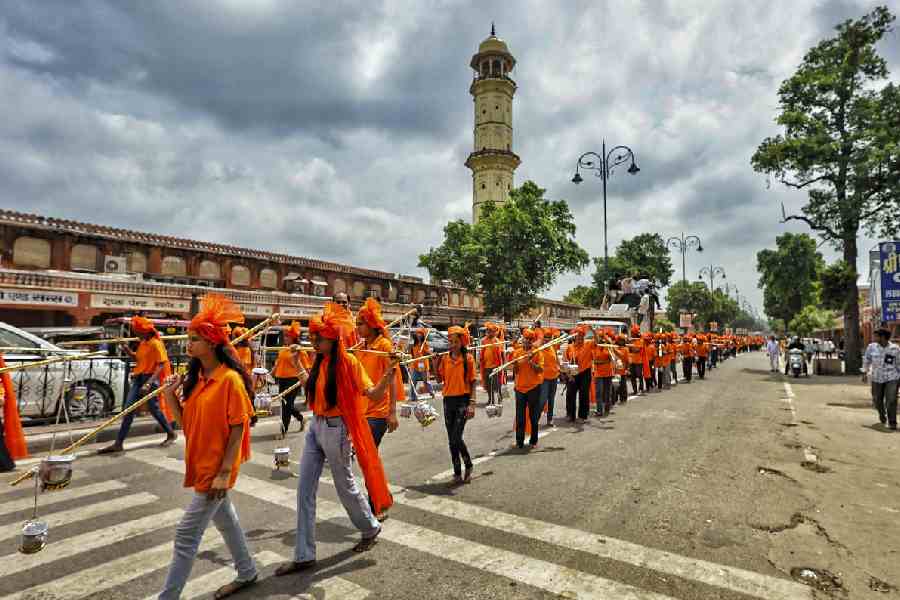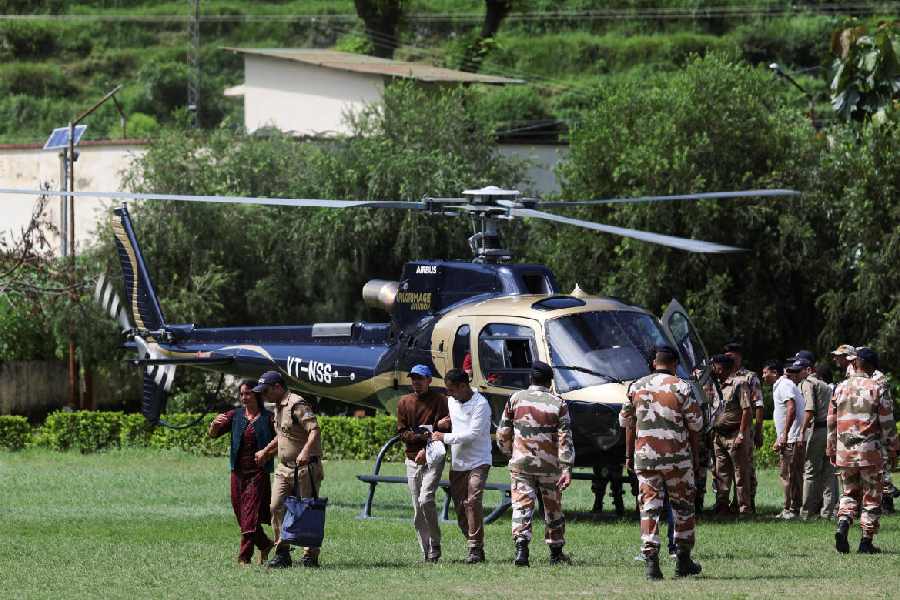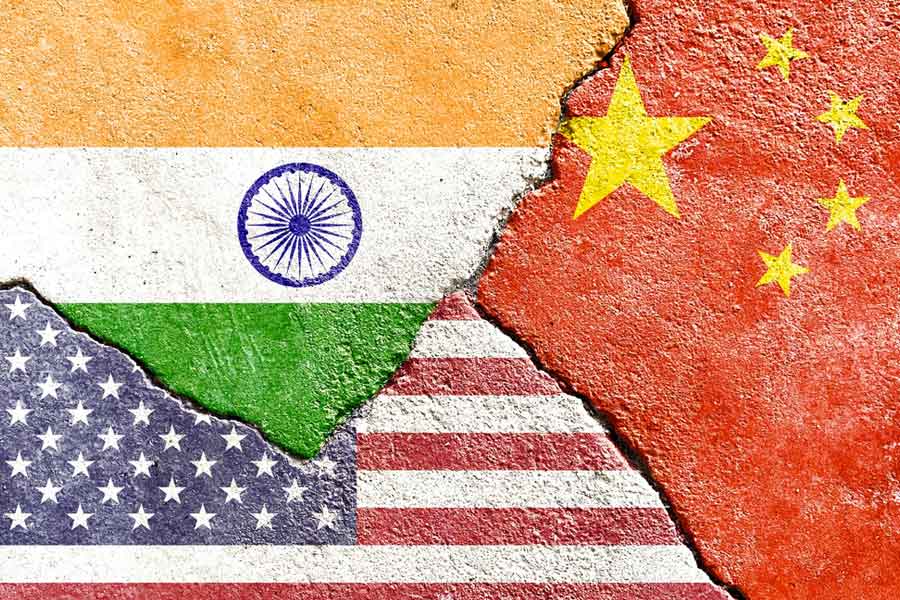 |
| Pavan K. Varma at the Calcutta Literary Meet. Picture by Anindya Shankar Ray |
Translator and ambassador to Bhutan, Pavan K. Varma speaks to Metro about wearing two hats.
What was your experience at the Calcutta Lit Meet?
I think it’s a very good beginning. It has a potential, which needs to be developed. I have always enjoyed being in Calcutta, because I find that this city has a cultural vibrancy that can be felt not in an auditorium but in the streets, through interaction with the people.
And the Jaipur Literature Festival?
JLF is now five years old, and it has grown beyond the wildest imagination of the organisers. Calcutta Lit Meet will reach that stage, but it will take some time.
You are the Indian ambassador to Bhutan and also an author. How do you manage your two identities?
I have two worlds — one is my profession and the other my vocation. By and large, I keep these worlds separate. But I can escape from one to the other whenever I need to. And I have sustained them for almost 20 years now.
You have travelled far and wide. Didn’t you ever feel the urge to write about the places you visited?
I have been greatly appreciative of the cultures that I have been privileged to know more closely. But beyond that, being at a distance from India has helped me, in a way, to observe my country with objectivity. You draw from the culture you are living in. For instance, these days I am in Bhutan and I see how even the educated young are so culturally rooted. And I contrast this with the educated youth in our metropolises, who are visibly adrift from their culture, and in very great danger of becoming clones of another culture. So this helps you, sometimes, to draw inferences from the culture of the country that you are currently serving in. But for me the reference point has always been India.
You have authored books that deal with a range of topics — Ghalib: The Man, The Times; Krishna: The Playful Divine; Being Indian: Why the 21st Century Will be India’s…
I have written a book on Ghalib and another on Krishna, because it was a discovery of my own cultural heritage — religious, mythological and philosophical. I have a book that deals directly with contemporary India, with people like you and me. It’s called The Great Indian Middle Class. It deals directly with issues of cultural roots, the impact of globalisation and what kind of identity we are trying to forge for ourselves. It was to analyse from where the middle class came, how it grew, what it wants.
What is the role of a translator in the literary world?
I think a translator is an artist, but he should never try to overwhelm the original, because he must have the discipline and rigour to be faithful to the original, and never forget that he is a translator. But within that framework, translating is not transliteration — it should be able to present the original with the same brevity, cadence and rhythm of the original without loss of meaning.
So for instance, Ghalib has said: “Maut ka ek din mu’ayyan hai, neend kyun raatbhar nahi aati?” I translated that as, “A day is fixed for one’s death, why pass then the night than slept?”
It has the rhyme, meter and brevity of the original. I could have done that in eight lines, but then it would have lost its essence. So there is the challenge of translation. But it’s important to understand that the translator is not a mechanical artist reproducing the original in another language.
You had once said, “English has stifled the Indian languages.” How is that so?
English is not our mother tongue; it is a language of communication. There is a difference between the language of communication and a language of culture. And if a language of communication has more space than our own language across India, then it is a matter of worry. For instance, if the best talents in Bengali do not have excellent translations, which provide them a pan-Indian stage, then we are confining that talent to one language, whereas a relatively mediocre writing in English automatically gets a larger readership.
Also there is a certain heenta or inferiority, which is a consequence of colonialism, attached to our own mother tongue. If you ask someone a question in their mother tongue, he might answer back in English, so that you don’t think that he doesn’t know English. It has become a language of artificial status. People would prefer to speak bad English than no English.
What about the contemporary Indian authors who are primarily writing in English?
English is used as a status symbol, as a sign of being cultured and to reach out to a larger readership base. It is very sad. Everyone should have their work translated to their mother tongues at least.
Tell us about Loss is Gain, your first novel.
It is my first work of fiction, and frankly I am overwhelmed by the response. It is a powerful, fast-moving love story, but it deals with certain issues that involve you and me directly — like how do we face death? What if we are given life again, then how do we treat this gift of life?
We don’t pause to think about such issues. This book is based in contemporary India and Bhutan, and the two countries are also used as metaphors for another dialogue, which unfolds through the story. It is a dialogue between Hinduism and Buddhism through the characters Anand and Tara.
The book is inspired by the lives that I see all around, so absorbed in what I call “the tyranny of the immediate”.


